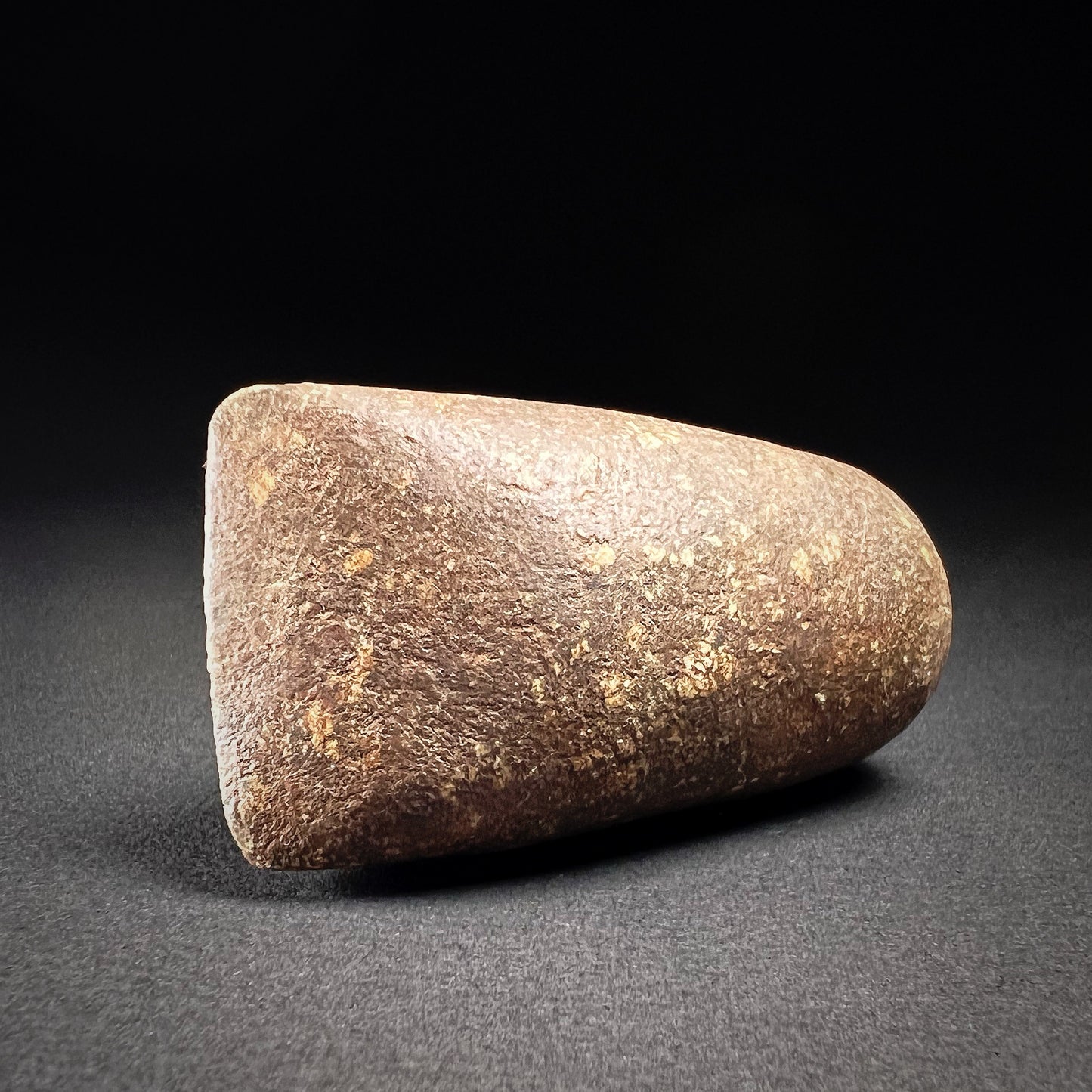Neolithic Tenerian Culture Stone Axe
Neolithic Tenerian Culture Stone Axe
Couldn't load pickup availability
Tenerian Culture, c. 4600–2500 BC, Ténéré Desert, Niger, West Africa
Magnificent semipolished stone axe head from the ancient Tenerian culture, fashioned from black-green stone with a trapezoidal outline, a curved cutting edge, and a rounded butt end. The blade has been carefully ground and polished to a sharp, functional edge, testifying to the maker’s remarkable technical skill and aesthetic sensibility.
The Tenerian culture flourished between 4600 and 2500 BC during the Neolithic Subpluvial, a wet and fertile phase of Saharan prehistory when the region was dotted with lakes and savannah. Discovered at the remote site of Gobero in Niger—hidden deep within the Ténéré Desert, or “desert within a desert”—the Tenerians represent a later population following the robust Kiffian culture.
Unlike their predecessors, the Tenerians were more gracile and lived a balanced life of hunting, fishing, and early cattle herding. Their material culture reveals a refined sense of craftsmanship and symbolic expression. Ground stone tools such as this fine axe were both utilitarian and likely held ritual significance, accompanying the dead in burials alongside pottery, ornaments, and weapons.
This elegant and well-preserved piece stands as a tangible relic of the Green Sahara’s vanished civilizations, bridging the worlds of art, archaeology, and anthropology.
Good condition. Surface wear and abrasions commensurate with age, nicks and chip, with rich encrusted patina. Size approx. 7,5cm x 3,6cm x 3,9cm.
Provenance: Dutch private collection.
References and further reading:
Stone Age mass graves reveal green Sahara, Nora Schultz, New Scientist, 14 August 2008. (https://www.newscientist.com/article/dn14536-stone-age-mass-graves-reveal-green-sahara/)
Stone Age Graveyard reveals Lifestyles of a 'Green Sahara': Two Successive Cultures Thrived Lakeside, Uchicago News, University of Chicago, Aug 14, 2008. (https://news.uchicago.edu/story/stone-age-graveyard-reveals-lifestyles-green-sahara-two-successive-cultures-thrived-lakeside)
Lakeside Cemeteries in the Sahara: 5,000 Years of Holocene Population and Environmental Change, Paul Sereno and others, Plos One, August 14, 2008. (https://doi.org/10.1371/journal.pone.0002995)
Lost Tribes of the Green Sahara, Peter Gwin, National Geographic September 2008, pp. 126-143.



-
Shipping
The shipment will be prepared in the course of 3-5 days and dispatched via Posti Group Oyj or purchased item(s) can be picked up from our shop during the store's opening hours (Tarkk’ampujankatu 4, 00140, Helsinki, Finland). Within the Finland, all items are shipped via Posti Group Oyj unless otherwise requested. We pack the items carefully and mainly in recycled materials because we want to save nature. You will receive the tracking number for your items by e-mail.
-
Returns
Returns and exchange will be accepted within fourteen days (14) of receipt at the purchaser’s cost to include freight and packaging. Items must be returned in the same condition as when they were shipped, and will not be accepted if damaged or altered in any way. Please inform us via email (info@gotanmaailma.fi) or by calling +358408408352 before sending. We do not accept returns more than 14 days after delivery.



